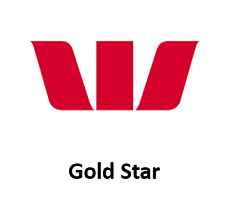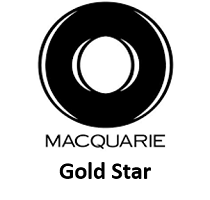Twelve months ago, the consensus view in the market was that the May 2021 bank reporting season would be one of the worst in the past century. The May results season was expected to be more challenging than the GFC and, similar to 1992, when both Westpac and ANZ came close to insolvency crippled by bad loans to entrepreneurs such as Alan Bond, Chris Skase and Robert Holmes à Court. Indeed 2021 was predicted to deliver an unemployment rate of 12%, capital raisings and minimal dividends as loan losses increased dramatically, eating hungrily into carefully built capital buffers.
The May 2021 reporting season proved these forecasts incorrect, with bank dividends increasing sharply, loan loss provisions from last year written back, and management even talked about share buybacks!
This article looks at the themes in the approximately 800 pages of financial results released over the past two weeks, including Commonwealth Bank's 3rd Quarter 2021 Update, awarding gold stars based on performance over the past six months.

What pandemic?
The key feature of the May results for the banking sector was a dramatic recovery in the financial health of corporate and household Australia. A year ago, the base case for banks included house prices falling by between 15-20% throughout 2020, with further deterioration expected in 2021.
This cautious stance saw Westpac taking $1.8 billion and ANZ $1 billion in provisions due to expected losses from COVID-19 and most banks declining to pay a dividend. The lack of dividends surprised many investors as Westpac even paid a dividend during its near-death experience in 1992.
Instead of seeing a steep increase in unemployment and falling house prices, thus increasing bad debts for the banks, Australia was one of the first nations to regain all jobs lost through the pandemic, reporting an unemployment rate 5.6% in March 2021.
This optimism was mirrored in the banks' results presentations which showed the number of stressed customers falling steadily throughout the year. Indeed, from looking at the recent set of bank results, it is often tough to discern any impact of COVID-19. For example, ANZ reported bad debt charges of 0.08% of their loan book, an all-time low and of the 121,000 home loans in deferral in May 2020, only 2,000 have moved to hardship, with the rest returning to payment.
The below chart shows bank bad debts over the past 40 years. In 2021 the combination of increases in employment, sharply rising house prices and record low interest rates have seen bad debts fall significantly. The recovery from COVID-19 has proved to be faster than the GFC and nothing like the decade it took the banks to recover from 1991-92.

Too much capital
All banks have core Tier 1 capital ratios well above APRA's 'unquestionably strong' benchmark of 10.5%, aided by asset sales in wealth management and low dividend payout ratios in 2020. Australia's banks entered 2020 with a greater ability to withstand an external shock than was present in 2006 going into the GFC.
From the below table, you can see that the banks have been building capital, particularly since 2015 when APRA required that the banks be "unquestionably strong and have capital ratios in the top quartile of internationally active banks". Furthermore, in response to the 2018 Financial Services Royal Commission, the banks further increased capital by divesting their wealth management and insurance businesses. This resulted in the banking sector remaining well capitalised, with the capital only building as the expected loan losses from COVID-19 have not eventuated.

While during the GFC, all banks needed to raise capital, in 2020, NAB was the only bank to issue new equity raising $3.5 billion in April 2020. Commonwealth Bank came out ahead in May with the strongest capital ratio at 13.4% among the banks.
We expect that towards the end of 2021, most banks will seek APRA approval to return capital to shareholders, either special dividends or share buybacks. Management teams are generally incentivised to conduct share buybacks which permanently reduce outstanding equity, thus making management return on equity (ROE) targets that trigger bonuses easier to achieve.

Don't waste a crisis
Several banks are taking advantage of social distancing to rationalise their branch network. On average, the major banks each have over 1,000 branches around Australia and have experienced a decline in usage over the past decade. NAB reported that 93% of retail transactions are now conducted electronically. Rationalising branch networks, while politically unpopular, is an opportunity to reduce the cost base and obtain a dividend from the extensive investment in technology. In May, Westpac announced plans to reduce its annual cost base by $2 billion to $8 billion via a combination of cutting head-office jobs and closing branches.

Rising net interest margins
Before the COVID-19 pandemic, the biggest issue the banks were expected to face over the next few years was maintaining net interest margins as the cash rate moved towards zero. Banks earn a net interest margin [(Interest Received - Interest Paid) divided by Average Invested Assets] by lending funds at a higher rate than borrowing these funds either from depositors or on the wholesale money markets.
When the prevailing cash rate is 6%, it is much easier for a bank to maintain a profit margin of 2% than when the cash rate is 0.1%. Falling interest rates reduce the benefit that banks receive from the billions of dollars held in zero or near-zero interest transaction accounts.
However, this cheap source of funding continues to benefit the banks. In their result, Westpac revealed that in March 2021, the bank held $257 billion on accounts earning less than 0.25%, an increase of $61 billion over the last six months. It indicates that a portion of the stimulus payments are still being saved and not spent.
The March 2021 reporting season saw net interest margins increase due to lower funding costs. The banks more heavily exposed to mortgages (CBA and Westpac) traditionally have higher margins than the business banks (NAB and ANZ) which face competition from international banks when lending to large corporates. Westpac posted the strongest net interest margin in May with an increase of 0.05% to 2.09%. While this sounds like a minute increase, it becomes significant when played out over a loan book of $690 billion.

Dividends
In the lead up to the May 2021 reporting season, it was challenging to forecast bank dividends. Management needs to be conservative in case economic conditions deteriorated versus the desire to reward shareholders who saw their dividends cut heavily in 2020.
In May, all banks increased their dividends significantly in response to higher profits, low loan losses and the removal of restrictions imposed by APRA in 2020 that limited dividends to 50% of earnings. NAB increased its semi-annual dividend by 100% to 60 cents, though this is still 30% below pre-COVID 19 levels. Macquarie wins the gold star, increasing its dividend by 9% and it was the only bank not to cut dividends as the global bank generated record profits during a pandemic-affected year.

The road back to pre-COVID-19 levels of profits and dividends
While the banks will eventually see profits from banking return to pre-COVID-19 levels, the road back to the same dividends per share as in 2019 will be slow due to a combination of asset sales (lost earnings) and equity issues (increased shares) from NAB and Westpac.
However, Atlas believes that the path to restoring profits will be quicker than during both the GFC and the 1990s recession. In 2021 the banks have higher credit quality in their loan books: no Quintex, Bond Group, ABC Learning, US CDOs or UK retail banking exposure. Additionally, customers feeling financial stress now face interest rates in the low single digits, not the 18-20% mortgage rates seen in the early 1990s or 7-9% during the GFC.
We expect dividends to continue to increase across the banking sector in 2021, provided the economy remains robust, and there are no further significant outbreaks that shut down sections of the economy. Given the high levels of capital, one lever that bank management teams have to drive earnings and dividends per share growth is to conduct significant share buybacks to reduce their share count.
Our take
Twelve months ago, Atlas took an optimistic stance towards the banks, viewing that the bad debt trajectory would be closer to 2009-11 rather than the early 1990s. The banks have managed the COVID-19 crisis well, with no major corporate collapses, supported by the massive stimulus measures put in place by the Federal Government. The stimulus maintained employment, boosted retail sales and fueled rising house prices.
While the outlook remains far from certain, Australia's banks have historically performed well coming out of crises that have reduced foreign competition and allowed them to solidify the banking sector oligopoly.
Hugh Dive is Chief Investment Officer of Atlas Funds Management. This article is for general information only and does not consider the circumstances of any investor.